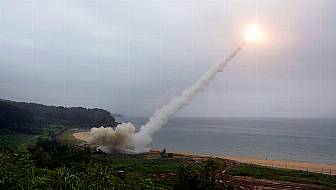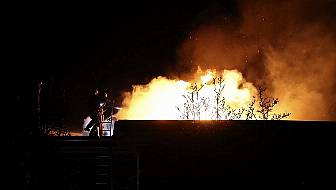Canadian troops are being sent to assist the recovery from the devastation of storm Fiona, which swept away houses, stripped off roofs and knocked out power across the country’s Atlantic provinces.
After surging north from the Caribbean as a hurricane, Fiona came ashore before dawn on Saturday as a post-tropical cyclone, battering Nova Scotia, Prince Edward Island, Newfoundland and Quebec with hurricane-strength winds, heavy rains and huge waves.
Defence Minister Anita Anand said on Saturday that troops would help remove fallen trees and other debris, restore transportation links and do whatever else is required for as long as it takes. She did not specify how many troops would be deployed.
Following Hurricane Fiona, our #5DivSoldiers are preparing to respond to the province’s request for assistance. The #MightyMaroonMachine trains throughout the year to be able to quickly and effectively respond to those in need. We are here to serve our country and our communities pic.twitter.com/AXNH3olgoR
— 5thCanadianDivision (@5CdnDiv_5DivCA) September 25, 2022
Advertisement
Fiona was blamed for at least five deaths in the Caribbean, and while there were no confirmed fatalities in Canada, authorities on Sunday were searching for a 73-year-old woman missing in the hardest hit town of Channel-Port Aux Basques on the southern coast of Newfoundland.
“She’s likely washed out to sea but we haven’t been able to confirm that,” said Cpl Jolene Garland, a spokeswoman for the Royal Canadian Mounted Police.
Police said the woman was last seen inside the residence just moments before a wave struck the home on Saturday morning, tearing away a portion of the basement.
“I’m seeing homes in the ocean. I’m seeing rubble floating all over the place. It’s complete and utter destruction. There’s an apartment that is gone,” said Rene J Roy, chief editor at Wreckhouse Press and a resident of the town.
Mr Roy estimated between eight to 12 houses and buildings had washed into the sea, adding: “It’s quite terrifying.”
As of Sunday, more than 252,000 Nova Scotia Power customers and over 82,000 Maritime Electric customers in the province of Prince Edward Island — about 95 per cent of the total — remained in the dark. So were more than 20,600 homes and businesses in New Brunswick.
More than 415,000 Nova Scotia Power customers — about 80% in the province of almost one million people — had been affected by outages Saturday.
Utility companies say it could be days before the lights are back on for everyone.
Cape Breton Regional Municipality Mayor Amanda McDougall said on Sunday that over 200 people were in temporary shelters. Over 70 roads were completely inaccessible in her region, which declared a state of emergency.
She said she could not count the number of homes damaged in her own neighbourhood.
She said it was critical for the military to arrive and help clear debris, noting that the road to the airport is inaccessible and the tower has significant damage.
Ms McDougall said it is amazing there are no injuries.
“People listened to the warnings and did what they were supposed to do and this was the result,” she said.

Prince Edward Island premier Dennis King said few communities were spared damage, with the devastation seemingly beyond anything before seen in the province.
Entire structures were washed into the sea as raging surf pounded Port Aux Basques, Newfoundland.
“This is not a one-day situation where we can all go back to normal,” Mayor Brian Button said on social media. Unfortunately, this is going to take days, it could take weeks, it could take months in some cases.”
In Puerto Rico, too, officials were still struggling to grasp the scope of damage and to repair the devastation caused when Fiona hit the US territory a week ago.
As of Sunday, about 45 per cent of Puerto Rico’s 1.47 million power customers remained in the dark, and 20 per cent of 1.3 million water customers had no service as workers struggled to reach submerged power substations and fix downed lines.

Officials across Eastern Canada also were assessing the scope of damage caused by the storm, which had moved inland over south-eastern Quebec.
Mike Savage, mayor of Halifax, said the roof of an apartment building collapsed in Nova Scotia’s biggest city and officials had moved 100 people to an evacuation centre. He said no one was seriously hurt.
The Canadian Hurricane Centre tweeted that Fiona had the lowest pressure — a key sign of storm strength — ever recorded for a storm making landfall in Canada.
“We’re getting more severe storms more frequently,” said Prime Minister Justin Trudeau, who said more resilient infrastructure is needed to withstand extreme weather events.
Peter MacKay, a former foreign and defence minister who lives in Nova Scotia, said he had never seen anything to match Fiona, with winds raging through the night and into the afternoon.
“We had put everything we could out of harm’s way, but the house got hammered pretty hard. Lost lots of shingles, heavy water damage in ceilings, walls, our deck is destroyed. A garage that I was building blew away,” Mr MacKay said in an email to The Associated Press.







